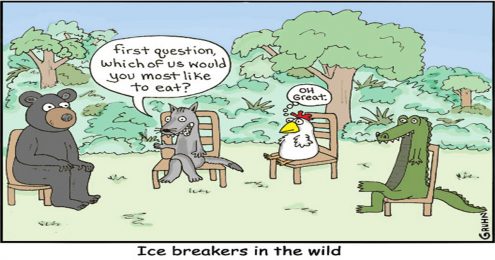So many organizational challenges can be tied back to having a board that is, let’s say, sub-optimal.
The health of the organization and the impact of its mission depends on the right leadership. Yet, a dysfunctional board is a top problem for many nonprofits of all sizes.
So what does a dysfunctional board look like? Here are real quotes taken from my consulting practice (I’m not naming names for obvious reasons):
“90% of our board members are the executive director’s best friends (aka puppets).”
“One meeting was enough to let me know that it was a totally dysfunctional board that was being run unilaterally by a… dictator and her clueless patronizing minions.”
“A trustee recently stated at a board meeting that, in times of cash flow trouble, making payroll should be the organization’s lowest priority.”
“Board members don’t hold each other accountable because they don’t want to hurt other board members’ feelings.”
I could go on. But, you can probably sense the theme happening here.
There’s no collaboration. The twin-engine jet is being pulled in two different directions.
That’s the bad news.
The good news is that dysfunctional boards have three common causes that are pretty easy to spot. And acknowledging the problem is the first critical step to recovery.
So, here’s how to recognize a dysfunctional board:
The 3 DEADLY SINS OF DYSFUNCTIONAL BOARDS
Sin #1: Shameless Self-Interest
Examples:
- The organization has serious financial trouble. The executive director informed the board we might not make payroll. Still, one board member asked at the next meeting if, “we could do better than Subway for lunch”.
- During salary negotiations with an executive director, more than one board member told her that the gratification for all the good work should be compensation enough.
- At least half our board asked us for comp tickets to our annual fundraising gala.
Board members like these are more self-interested than mission-committed.
Sin #2: Definite Disinterest
Examples:
- During a board meeting, a board member actually says, out loud, “I’m afraid my mother will be mad at me if I ask her to make a donation.”
- At pretty much every single meeting, there are board members who don’t show up but post about an event they went to at the same time on Facebook.
- Board members can be seen playing Candy Crush during meetings.
Board members like these clearly don’t understand the assignment.
Sin #3: Conflict of Chiefs
Examples:
- Our board members refuse to come to our events unless they are given a speaking role.
- We had a board member negotiate a merger with another organization, which would be fine except she wasn’t the chair, wasn’t on any committee, and had no authority to do so.
- Our board member joined the board of a competing organization. Somehow he couldn’t see any conflict of interest.
- One of our members pledged a bunch of money many months ago but never cut the check. Last week we saw his name listed as a leading donor for another organization.
Board members like these are not clear on their roles and responsibilities.
HOW DO NONPROFIT BOARDS BECOME DYSFUNCTIONAL IN THE FIRST PLACE?
It’s almost never because of malice or bad intent. Boards become dysfunctional because organizational leaders (board and staff) don’t know any better. They don’t know what ‘functional” looks like.
I was on the phone with an Executive Director. She said, “Can I call you back? I’m just finishing the board meeting agenda – my board chair is waiting for it.“
I said, “Sure but you know that is not your job.“
She said “Huh?“
I replied: “It’s not your meeting; why should it be your agenda?“
She was ecstatic. She didn’t hang up. She had no idea that this responsibility rightfully belonged to the board chair. People really don’t know what a functioning board looks like.
This lack of clarity can happen because roles and responsibilities are not clearly defined and communicated. Or because board members are more interested in power than service. Or because the board is composed of friends and family. The “inner circle.”
In other words, they don’t have the “right people on the bus.”
HOW TO GET THE RIGHT PEOPLE ON YOUR BOARD BUS
In a thriving nonprofit, board chairs and staff leaders act as co-pilots in their nonprofit “twin-engine jet.” To accomplish that, one or many of the following may need to happen:
1. Make room for the right leaders. The first step is to get the wrong people OFF of your board so that you can make room at the table for the right leaders to join.
2. Ask the right questions. Here are six critical interview questions for nonprofit board members.
3. Understand where your board currently stands. It’s hard to improve if you don’t have a baseline to start from. You may have an intuitive sense, but it helps enormously to have a more objective evaluation.
4. Recruit really well. Don’t settle. Too many boards, unfortunately, are willing to accept into their ranks anyone willing to be there. But that’s a terrible way to go about it. And it turns out that once you’ve found diverse, high-caliber candidates, it can be surprisingly simple to get them on your board. But how do you find such amazing people for your board in the first place?
THE BOARD YOU HAVE IS THE BOARD YOU BUILD
You simply cannot have a thriving nonprofit without a high-performing board. Full stop.
The challenge of finding and vetting the right people and then convincing them to join your board is real. But it’s SO IMPORTANT to do it well. Critical, in fact.
And so I want to invite you to join my team at the Nonprofit Leadership Lab for a live workshop that starts on Monday, June 10th:
“How to Identify, Recruit, and Convince the RIGHT People to Join Your Board“
In just one week, you will learn to:
- Identify the needs and gaps in your current board.
- Develop a practical plan to move “bad apple” board members off your board.
- Gather a rockstar shortlist of potential board candidates, beyond your inner circle.
- Convince your top candidates to hop on board. (See what I did there?)
People use the phrase “game changer” a little too loosely at times, but given how important it is to have a high-performing board, participation in this workshop really could be a game changer for your org.
This workshop is ideal for nonprofit leaders, board members, and executive directors who want to build a stronger, more effective board. It’s perfect for those struggling to recruit the right members, enhance board diversity, and improve overall board engagement.
HERE ARE THE DETAILS…
When is it?
Sessions are between 3-4 pm ET from June 10-14, 2024.
In just 1 hour a day, you will gain invaluable insights and have the opportunity to get expert advice from industry leaders who have been where you are.
What happens if I miss a session (or two, or three)?
No worries! All recordings will be made available soon after the live session so you can watch them when it is convenient for you.
What does the workshop cost?
The cost is $149.
But, you can actually get it for free if you are a member of the Nonprofit Leadership Lab (and we’ve opened the doors to accept new members between now and the workshop.)
And if you’re already a Lab member — no worries! You get this (and all of our monthly workshops) as part of your membership.
Can I have my entire board participate?
Of course! We have a special, highly-discounted group rate for exactly this purpose. Just email us at support@nonprofitleadershiplab.com for the details.
Will there be an opportunity to ask questions during the workshop?
Yes! My team has built Q&A into the workshop. But I also feel very strongly that one of the biggest and most important opportunities in our sector is for all of us to lift each other up. To support each other. This is more important than ever before.
Sounds great! Where can I sign up?
The registration page has all the specific details of the workshop, including a day-by-day breakdown.
I hope you’ll join us. Together, let’s build the boards of our dreams!



